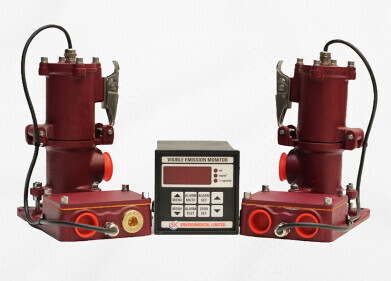Air Monitoring
How real-time monitoring of urban greenhouse gases can help tackle climate change
Oct 06 2021
City and regional government leaders and policymakers in Glasgow are being invited to discover how real-time monitoring of urban greenhouse gases (GHGs) can help them in their efforts to tackle climate change.
The Cities are the Key to the Climate Solution Summit, organised by the Global Environmental Measurement and Monitoring (GEMM) Initiative, will showcase a pilot urban air quality monitoring project in Glasgow as the city hosts the COP26 climate change conference in November.
The project is establishing a dense network of 25 sensors monitoring levels of GHGs and particulate matter across Glasgow in real-time.
Data from the network of sensors, coupled with ‘inverse modelling’, can help to identify sources of GHG emissions, providing city leaders and policymakers with information to help them decide on climate change policies and observe their impact almost immediately.
Currently, most data on GHG emissions is calculated based on consumption of fossil fuels and is only available months or years later, whereas sensor networks offer the opportunity for direct, real-time atmospheric observations.
The GEMM Initiative-supported project is a collaboration between the University of Strathclyde, Glasgow City Council, Stanford University, the University of California at Berkeley (UC Berkeley), Optica (formerly OSA), AGU, the Met Office and the National Physical Laboratory.
The Cities are the Key to the Climate Solution summit will showcase these new technologies and methodologies for the monitoring of GHG emissions and air pollutants in real-time, consider the economic and legal perspectives of adopting this approach and will feature a roundtable discussion on the opportunities and challenges cities face in meeting GHGs and air pollution reduction goals.
Optica and AGU – international scientific societies partnering under the GEMM Initiative – are working with policymakers worldwide on new technology and scientific developments for local impact.
“We want to make city leaders aware of this technology, the opportunities it brings and encourage them to set up their own sensor network projects,” said Tom Baer, co-lead and Director of Stanford Photonics Research Center at Stanford University, USA.
“Recent deployments of low-cost, high-density sensors across several cities around the world are demonstrating the utility of mapping GHG and air pollution levels in real time.”
University of Strathclyde Professor Allister Ferguson, co-lead of the project, said: “Cities account for more than 70% of all GHG emissions and therefore have a key role to play in taking measures to tackle climate change. Indeed, many cities around the world are already committing to action and have set net-zero targets, including Glasgow.
“Analyses of COVID-19 emissions reductions during government stay-at-home orders have shown that determining the emission contributions from various source sectors with detailed mapping and timing across the full daily cycle are possible and can provide invaluable information on governmental policies affecting GHG emission levels.”
The Glasgow pilot project uses GHG sensors developed by Professor Ron Cohen at UC Berkeley which cost a fraction of the price of traditional monitoring stations.
Professor Cohen has been operating a large network of sensors in the San Francisco Bay area for eight years as part of the BEACO2N project. During the ‘shelter-in-place’ orders imposed in California as a result of COVID-19 he was able to see how the decrease in vehicular traffic reduced carbon dioxide (CO2) emissions in the area.
He said: “When the COVID ‘shelter-in-place’ order began in California, almost immediately there was a tremendous reduction in CO2 emissions in the San Francisco Bay Area. Regional CO2 emissions dropped by 25%, almost all of it due to a nearly 50% drop in road traffic.
“It really allowed us to test our ideas of how much of the CO2 is from industry and how much is from cars. This is what it would look like for CO2 if we electrified the vehicle fleet.
“The implication is that emissions on the roads could be changed quickly and dramatically by policy, and we have a tool to follow that relatively quickly. This is the way to know we are on track to meet our goals.”
Digital Edition
IET 34.2 March 2024
April 2024
Gas Detection - Biogas batch fermentation system for laboratory use with automatic gas analysis in real time Water/Wastewater - Upcycling sensors for sustainable nature management - Prist...
View all digital editions
Events
May 03 2024 Seoul, South Korea
May 05 2024 Seville, Spain
May 06 2024 Minneapolis, MN, USA
May 13 2024 Munich, Germany
May 15 2024 Lund, Sweden


















